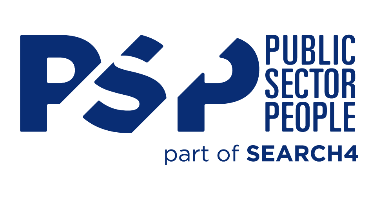Building A Return To Work Program For New Parents

By Emily Harris
Last week, we explored the steps individuals can take when returning to work within the public sector after parental leave. But what about their employers? What processes and structures can government agencies and local councils take to ensure as smooth a transition as possible for employees returning to work after an extended break and especially for new parents? Today, we break down the key steps to a successful ‘returner’ program:
What Is A Returner Program?
Supported returner programs provide support for individuals wishing to re-enter the workforce after an extended career break – typically two years or more. The programs are paid and often follow a structured process where the ultimate goal is to re-integrate the individual employee back into the workforce through expanding their professional networks and bridging any skill gaps through training and mentorships. So, who are considered ‘returners’? There are several situations that lead individuals to take an extended career break; dealing with an illness, caring for a family member, starting their own family, undertaking study etc. However, within this blog, the focus will be on those who are returning to work after parental leave, especially new mothers.
Interestingly, the need for returner programs could become more popular than ever for the public sector as we emerge out of the pandemic. While covid caused many businesses to close and others to downsize, the public sector actually experienced a significant demand for talent as a number of their service offerings were put under pressure to roll out covid initiatives like jobseeker, vaccinations and testing clinics, check – ins etc. Meanwhile, within other industries, pandemic-related closures drove record numbers of workers into unemployment, while record numbers of workers – disproportionately women – took leave of their jobs entirely or dropped down to part-time in order to take care of children after school and other support systems closed[1] (Cohen, 2021).
While the majority of restrictions lifted earlier this year with schools and daycares in particular re-opening, there are a number of employees and especially mothers) ready to return to work, while there remains a number of government agencies looking for talent as workloads remain high. Consequently, organisations that offer structured ‘return to work’ programs have a unique opportunity to widen their talent pool.
The Benefits Of Implementing A Supported Returner Program
There are numerous benefits to developing and maintaining a ‘return to work’ program, but the biggest benefits relate to diversity, attracting new talent and retention, which ultimately all contribute to improved performance for an organisation.
In relation to new talent pools, returner programs offer organisations the opportunity to widen their recruiting to groups that are often underrepresented. Mothers looking to get back into the workforce is a very common group, however returner programs also provide opportunities for older workers and more economically and racially diverse job seekers. According to learning and development specialist, Suzanne Rohan Jones, generally candidates that are attracted to these types of programs are super motivated, with a broader range of ages and abilities and with different educational and skill backgrounds, which adds to and strengthens the employer[2] (Beaudry, 2021).
In addition to attracting new talent, back to work programs are also a great pathway for retaining loyal employees, especially those that do decide to go on parental leave. There’s a reassurance for employees that go on parental leave, that they’ll be properly supported and cared for when they decide they want to come back and thus are less likely to consider other options when they decide to re-join the workforce. Furthermore, because of the design of returner programs which include mentorships and a range of work experience, returning individual employees have a better chance of finding a permanent or ongoing role that best suits their skills, experiences and lifestyle by the end of the program, which again minimises the chances of them leaving the organisation down the track.
Finally, returner programs are a great way to increase diversity in hiring – which is a key goal and driver across the public sector. There are many older individuals who are out of the workforce, and because some jobs tend to be skewed toward younger workers – returner programs are a great tool for older candidates to re-join the workforce. And considering that 89% of out-of-paid workers who are caring for family or the home are female, returner programs are a great strategy to enable greater gender diversity[3]. So many women can not only feel daunted by the prospect of returning to work after the time spent away to start their family, but being the primary carers of their children (more often than not), women can also find it difficult to return to the workplace, while also juggling their new family commitments. Having a carefully structured returner program, can ensure these mothers re-join the workforce at a rate that feels comfortable to them and build on any gaps in their skillset that may have occurred during their time away.
As the majority of us are well aware, having a diverse and inclusive workforce is hugely beneficial to an organisation’s overall performance. The variation in experiences and skills a diverse group of people bring when coming together improves problem-solving and innovation, as these employees will be able to approach problems/situations differently. Furthermore, employees that feel like they ‘belong’ and are part of the team, are going to be more engaged, which again positively contributes to the organisation’s overall productivity. Consequently, the implementation of return-to-work programs within government agencies are a win-win- both for the organisations and the returning worker[4].
Returner Requirements
According to the Department of Education, Skills and Employment there are 6 requirements government agencies need to consider when designing their return-to-work programs[5] (2021):
Technical Supports
While many individuals work hard to maintain their skills and knowledge while on a career break, many value time and support to bring them up to speed. Business support might include pre-interview coaching, mentoring, internal training, and regular interaction with the returner program manager (or similar) to rebuild confidence.
Flexible Work
Research has shown that the majority of women returning to work desire flexibility. They may wish to work part-time, alternate start and finish times, participate in a job-sharing arrangement or work condensed hours. Thankfully these options are readily available across the public sector and thanks to many months of lockdown where departments across government agencies were forced to embrace remote working, the public sector have now embraced working from home and it has become a common and popular workplace flexibility arrangement for staff.
Financial Consideration
Financial need is an important factor for women returning to work. Returners should be paid at a competitive rate, which is consistent with their skills, experience, and level of work undertaken.
Job Design
Returners may have had successful careers before taking leave. This should be reflected in the program, with opportunities for accelerated development and promotion beyond completion of the returner program.
Acknowledgement Of Skills
Programs should acknowledge the prior professional experience and skills of people returning from a career break. Without stimulating work there may be a risk that returners will be less likely to perform well or stay on at the end of the period.
Supportive Ecosystems
While Technical support is important, returners also crave social support in the form of networks, buddies and sponsors. Returners who have previously joined the business can provide a highly valuable source of support to new returners. As well as acting as buddies, they can promote the Returner Program to the broader business.
For organisations considering implementing a return-to-work program, or to further develop a program already in place, Career Revive offers a number of initiatives and advice, and is an Australian Government pilot designed specifically to help Australian businesses attract and re-train skilled women following a career break. You can learn more about the organisation here:
[1] Cohen, C. (2021). Return-to-Work- Programs Come of Age. Harvard Business Review. Retrieved from: file:///C:/Users/EmilyHarris/Downloads/Return%20to%20Work%20Programs.pdf
[2] Beaudry, J. (2021). Returnships: What They Are and Why You Should Offer Them. Lattice. Retrieved from: https://lattice.com/library/returnships-what-they-are-and-why-you-should-offer-them
[3] Returners To Work. (2019). Why You Should Support Returners. Gov. Uk.
[4] Career Revive. (2020). Returner Program Starter Pack. Department of Education, Skills and Employment. Retrieved from: file:///C:/Users/EmilyHarris/Downloads/Returner%20Program%20Starter%20Pack%20Toolkit%20(1).pdf
[5] Department of Education, Skills and Employment. (2021). Returner Requirements. Australian Government. Retrieved








Job Sectors
All content copyrighted | Privacy Policy | Cookie Policy | T&Cs | Powered with 💙 by Shazamme




